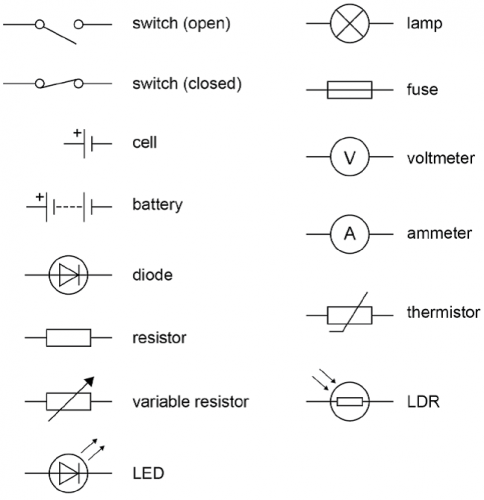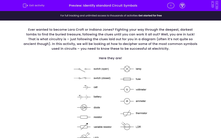Ever wanted to become Lara Croft or Indiana Jones? Fighting your way through the deepest, darkest tombs to find the buried treasure, following the clues until you can work it all out? Well, you are in luck! That is what circuitry is – just following the clues laid out for you in a diagram (often it’s not quite so ancient though). In this activity, we will be looking at how to decipher some of the most common symbols used in circuits – you need to know these to be successful at electricity.
Here they are!

There are some important things to remember about each of these symbols though:
Ammeters measure current in amperes or amps (A). Ammeters are always connected in series (in line with the other equipment). Voltmeters measure voltage, which is the potential difference (difference in electrical energy between two points) and drives the current flow. Voltage is measured in volts (V). A voltmeter is always connected to a circuit in parallel to the component with the voltage to be measured. Electricity doesn’t flow through a voltmeter and so it will break the circuit if you put it in series.
Now you' ve got all those symbols sorted out, it's time to try a few questions.








